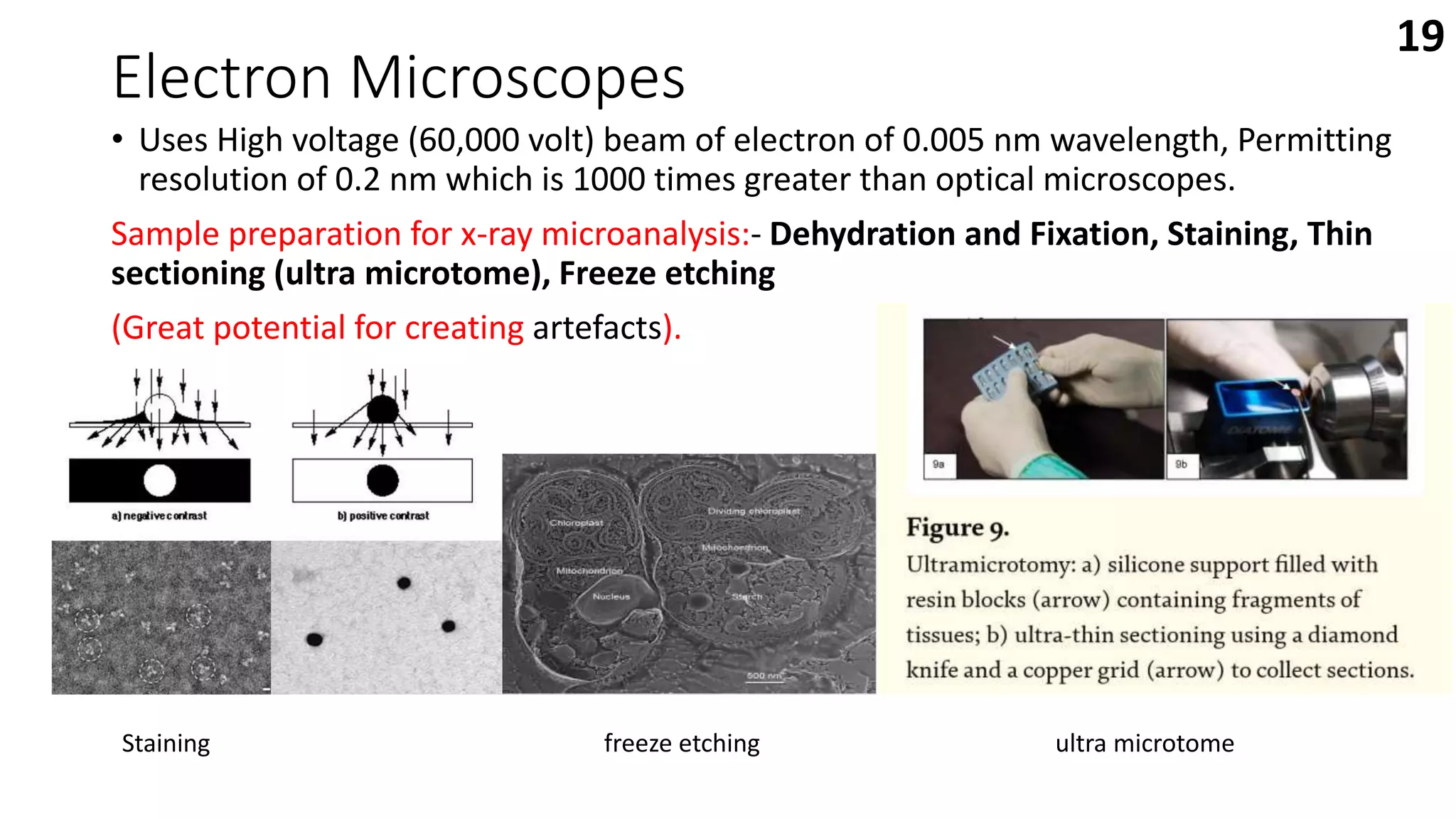1) The document describes different types of microscopes including optical, electron, and scanning probe microscopes.
2) Optical microscopes use visible light and lenses to magnify images up to 2000x, while electron microscopes use electron beams for higher magnification up to 2 millionx and better resolution.
3) Scanning probe microscopes like atomic force microscopes and scanning tunneling microscopes use physical probes to generate high resolution images of surface topography at the atomic scale without using light or electron beams.







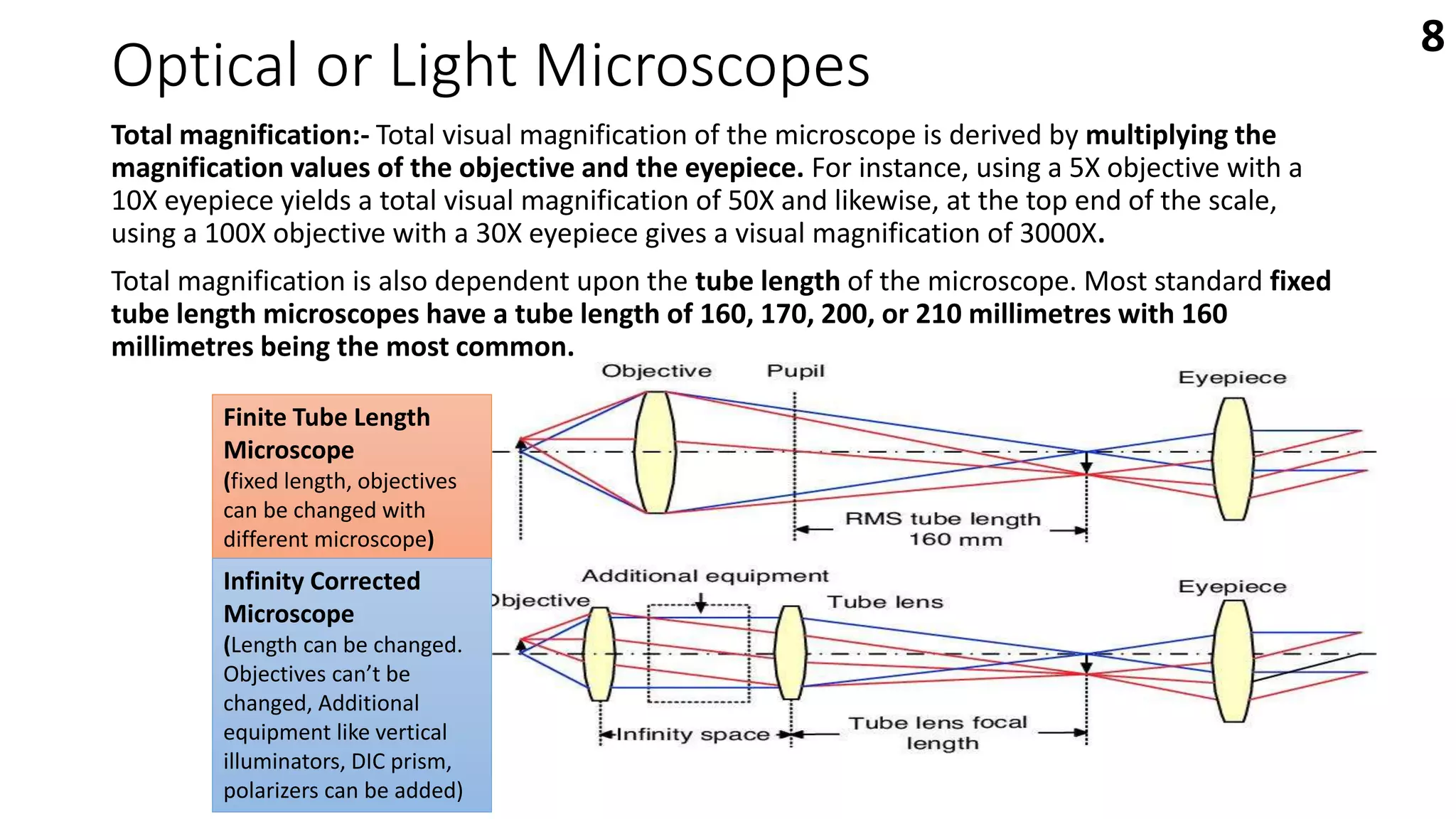


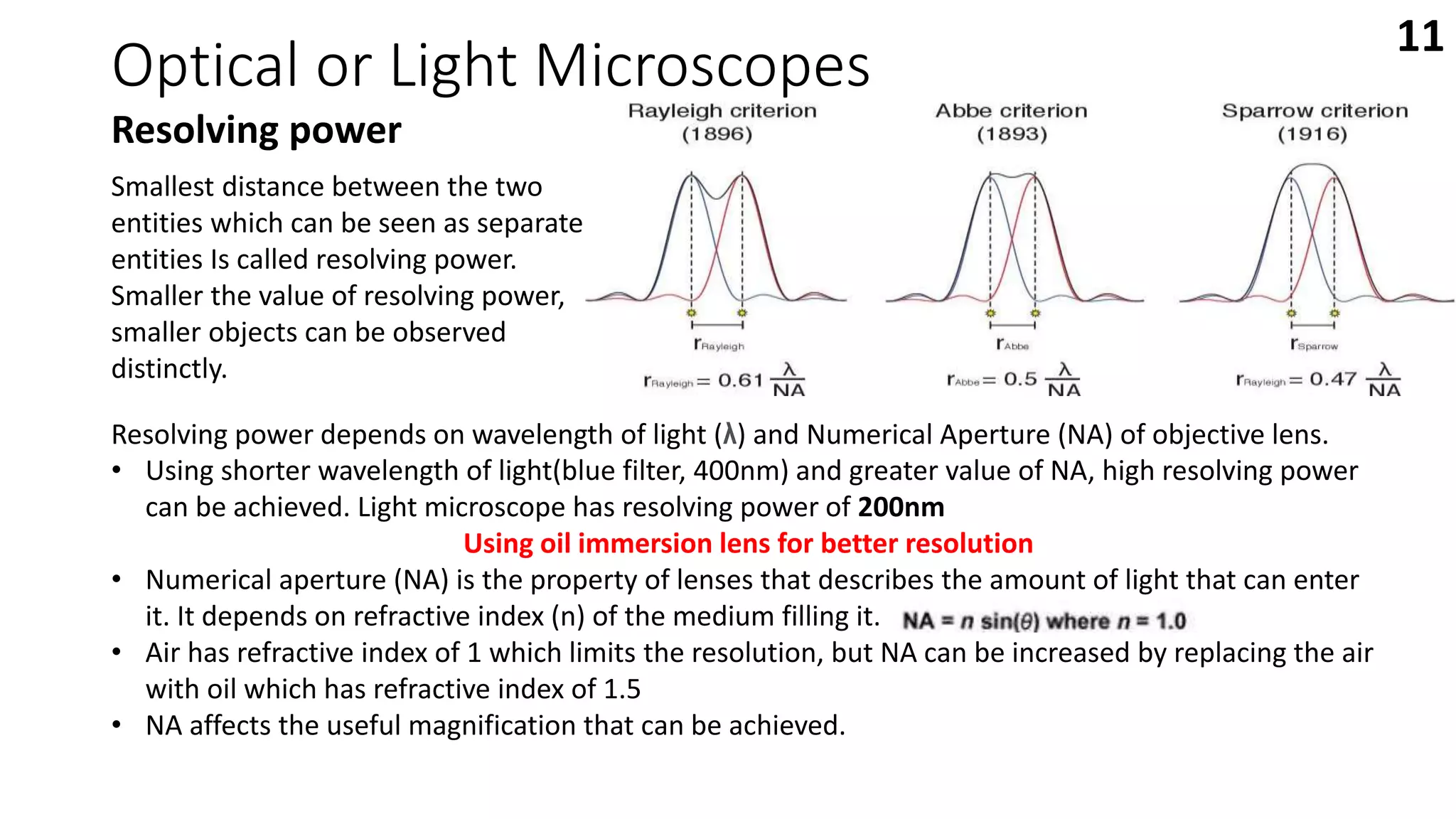
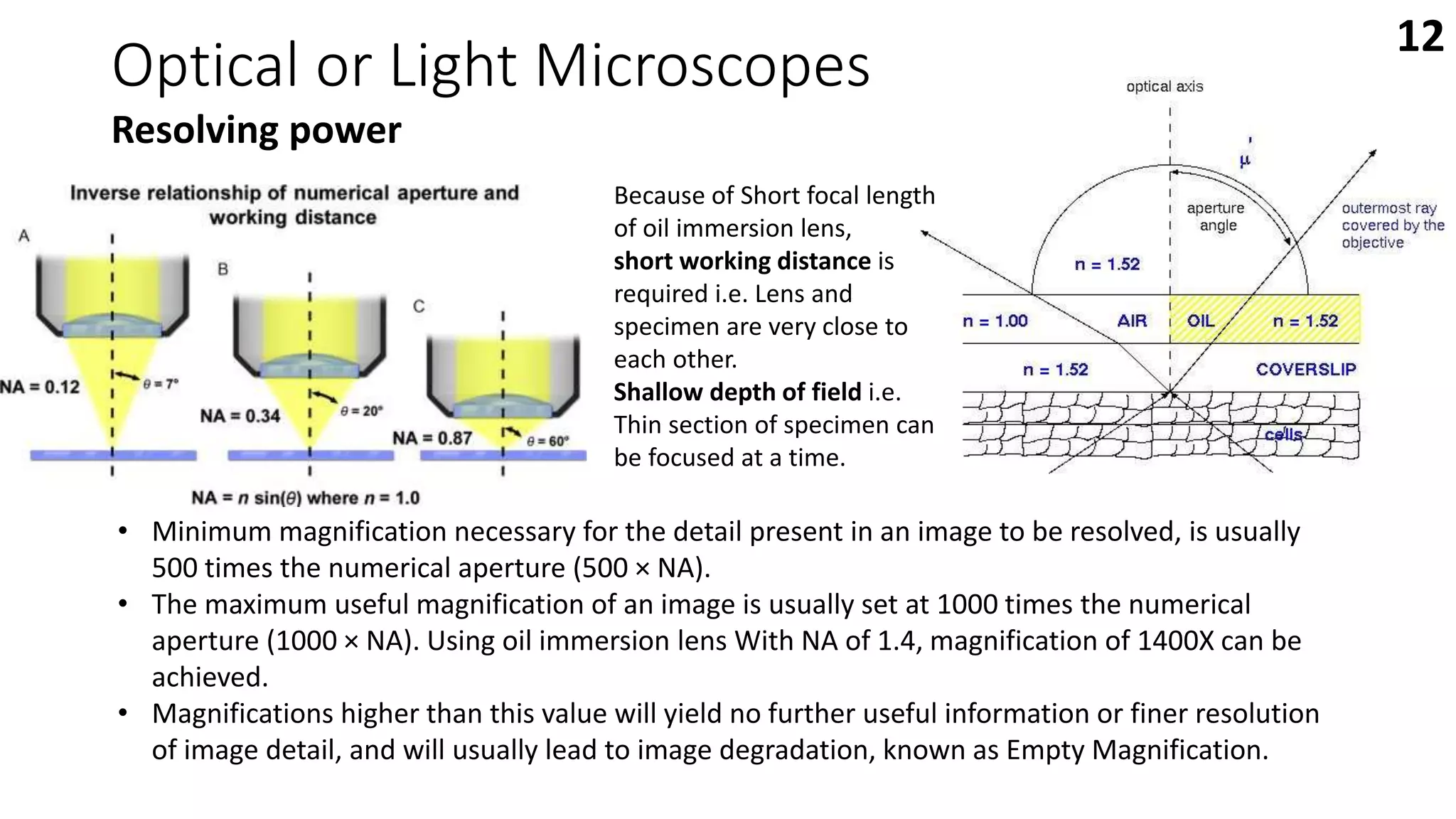


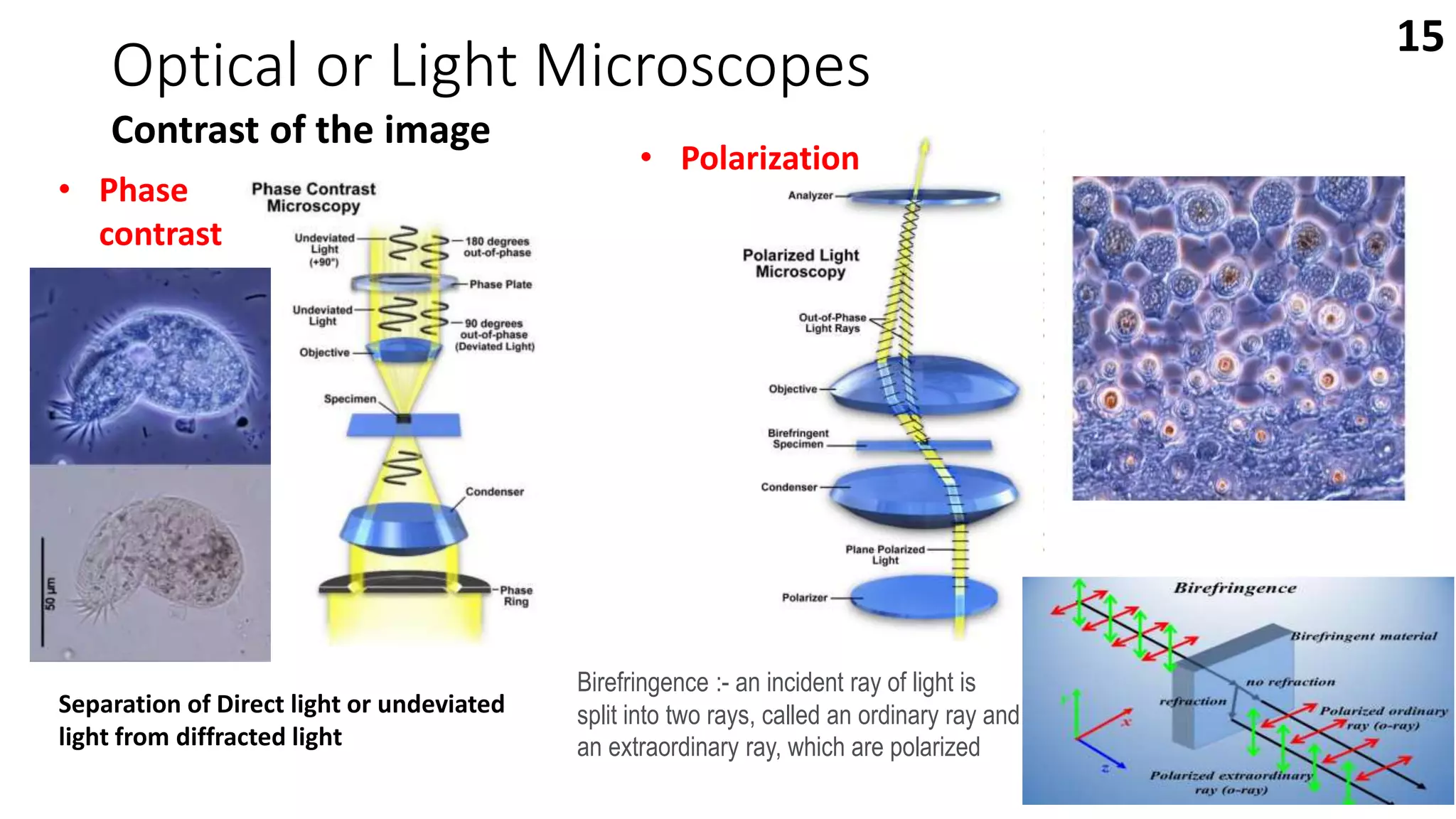
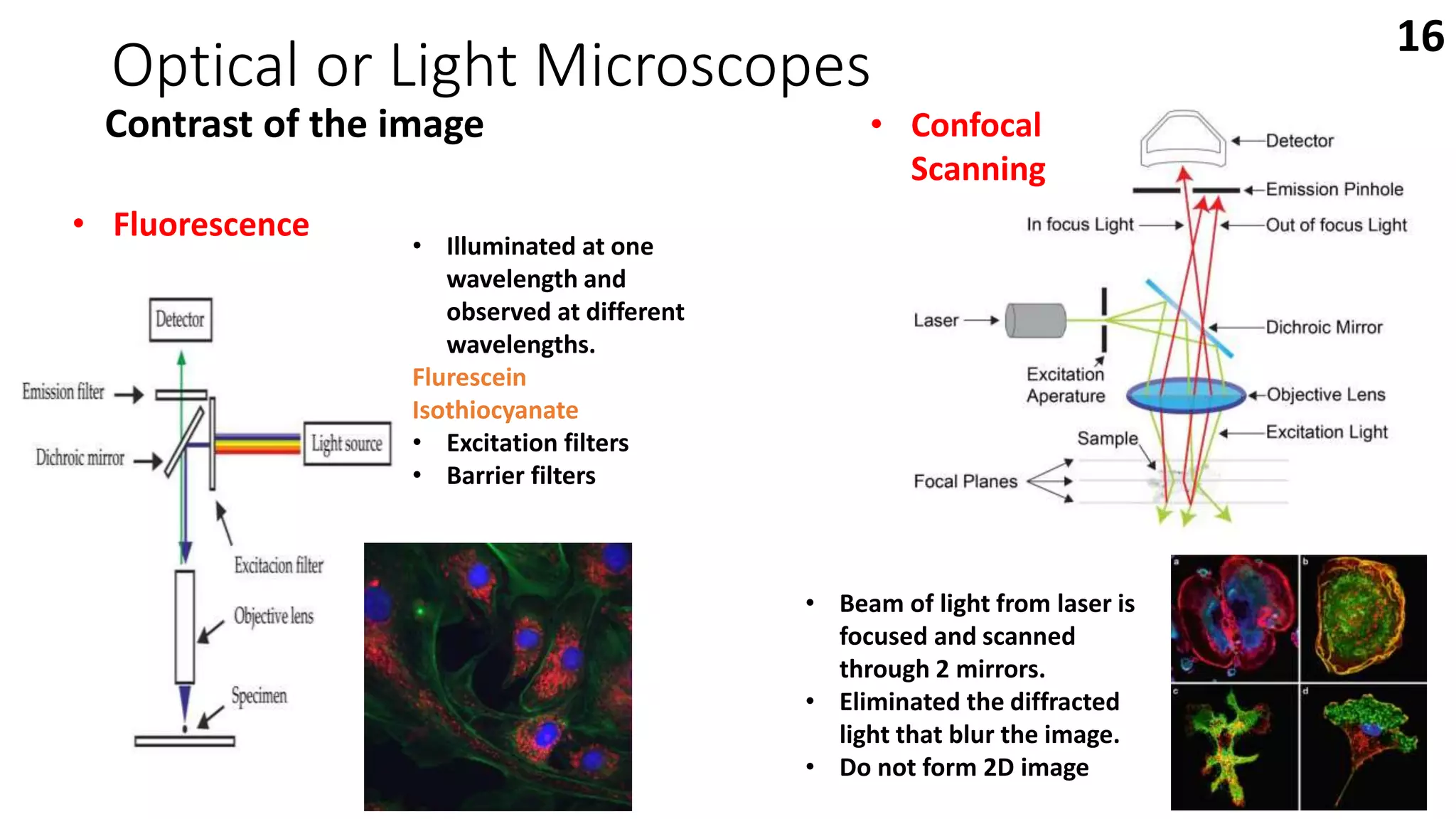
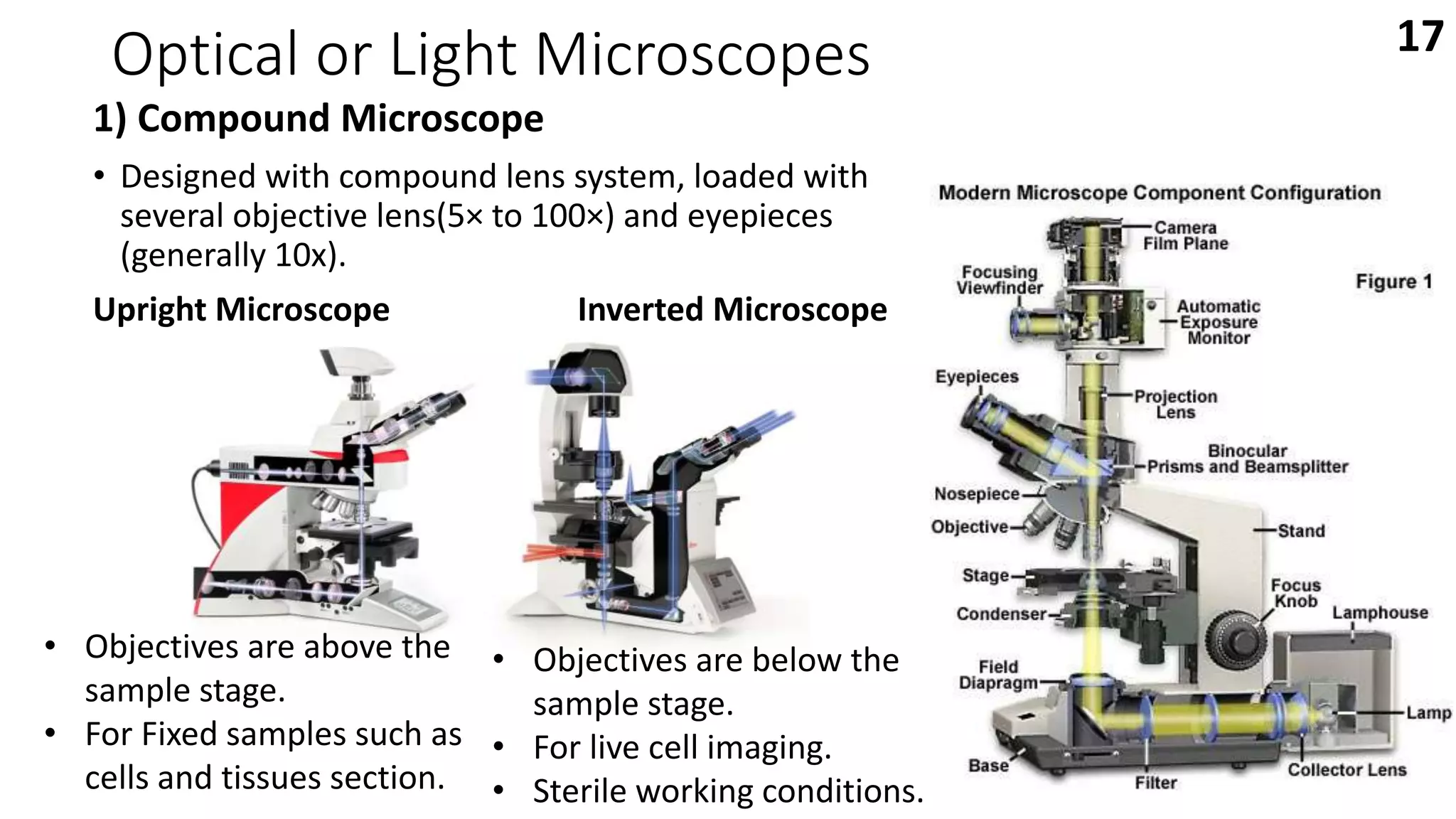
![Optical or Light Microscopes
2) Stereomicroscopes
• Comparatively low power as compared to compound microscopes.(usually below
100×) objective is [1× to 2×] and eyepiece is 10×
• They can have Fixed magnification system or
Zoom magnification system.
• Working distance is much longer.
• Also known as dissecting microscope
18](https://image.slidesharecdn.com/microscopyppt-221016052548-1c2c386a/75/microscopy-ppt-pptx-18-2048.jpg)
